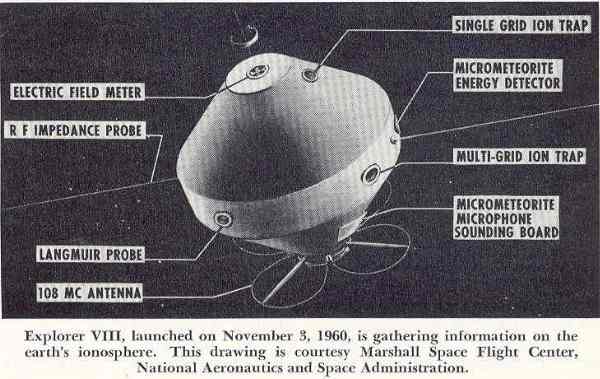
Have you ever listened to a pleasant radio broadcast only to have it fade out half-way and wondered what caused the interruption? Or perhaps you've marveled at how, on rare occasions, you can catch programs from faraway countries.
NASA's about to take some of the mystery out of these phenomena. Yesterday, the space agency successfully launched number eight in its Explorer series of small science satellites, the first in over a year. The 41kg probe has a brand-new type of mission, to explore the ionosphere–the upper atmospheric layer where atoms are violently stripped of their electrons by the merciless Sun, thus ionizing them.
This region has some fascinating properties, most significant of which is its ability to reflect radio waves. This is why you can pick up shortwave broadcasts from around the globe. The ionosphere is also a quicksilver place whose ability to relay radio changes by the minute.
Until today, the ionosphere had only briefly been probed by suborbital sounding rockets or by satellites on their way to orbit on other errands. Explorer 8 was purpose-built for the task of ionospheric study by Goddard Space Flight Center in Maryland, NASA's first established research center. As Explorer dips low in its eccentric orbit, four of its seven experiments measure the electrical charge on the probe's surface, the temperature of the electrons around the satellite, the total electrical current rushing over the satellite's skin, and the concentration of charged particles around the probe. Two other experiments measure the density of micrometeoric dust, and the final one allows measurement of atmospheric density. Interestingly, there are no solar panels on Explorer 8, as they would interfere with its ability to take measurements. We can expect a couple of months of good, battery-fueled data collection, however.

In plain English, Explorer 8 will give us our first true map of a crucially important piece of our atmosphere. The ionosphere is, essentially, our first sea wall against the ocean of space. Not only will we better understand radio propagation, we will also be able to quantify atmospheric electricity and analyze the base of our planet's magnetosphere. The instruments on Explorer 8 will be refined for use in future probes to other planets, letting us study them with similar comprehensiveness.
It's great news, but the really exciting bit is that the Explorer 8's rocket, the Army's Juno II, worked at all. The booster was developed by Von Braun's Huntsville, Alabama team back in 1958 as a competitor to the Air Force's Thor Able. When the Army got pushed out of rocket development, the Juno II became an orphan. As a result, the folks working on it stopped caring so much, and the rocket has since had a lackluster performance record. At a NASA hearing this summer, there was talk of pulling the plug entirely on the program. However, it was determined that of the four boosters left (built and paid for), at least two could be expected to work. Might as well use what you have rather than let them go to waste, I suppose.
That leaves three boosters, of which at least one will probably accomplish its task. Anyone want to make a bet on which one it will be?

Just tell me which one you don't want it to be, and I'll bet on it. With my record, that means it won't happen.
Thanks for the update, and pictures. Flying tops are much classier than flying saucers.
I know of two satellites slated for the final Juno II flights. One is a JPL probe designed to measure the shape of the ionosphere by beaming radio waves through it. The other is another Goddard satellite that will measure Gamma Rays from space.
If I have to pick one I'm more enthusiastic about, it's the latter. Gamma Rays get screened out by the Earth's atmosphere, so one needs a space-based observatory to really see them (sort of like Explorer 7 is needed to look at X-Rays).
So pray that Goddard's probe blows up, please.